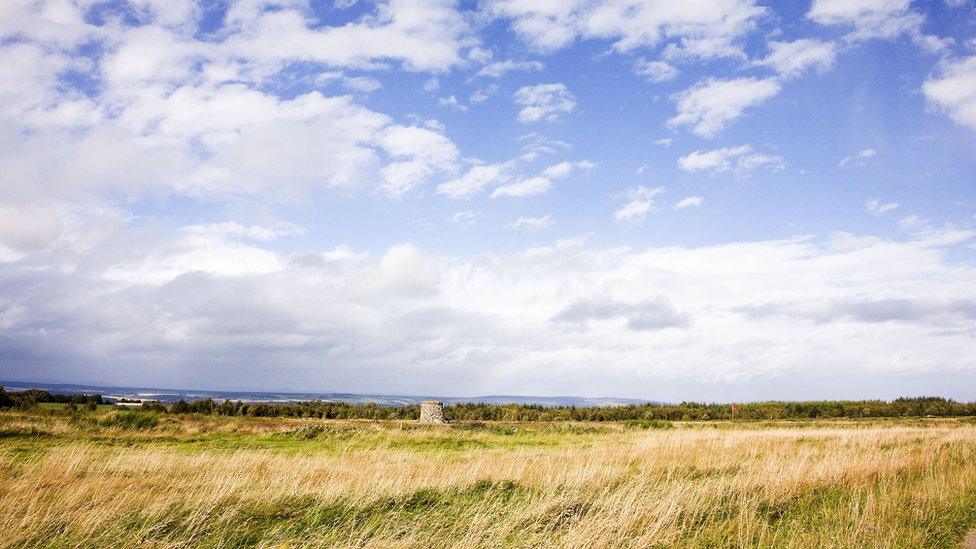Traditional plants tell Battle of Culloden story
- Published

The battle took place in 1746
Traditional Scottish plants are being used to tell the story of one the country's most famous battles.
Heather, yarrow and willow are being planted on Culloden Battlefield near Inverness over the summer as part of a project exploring the significance of the plants.
Some were used for medicinal purposes in the 18th century.
And many of the plants would have had links with the clans that became embroiled in the 1746 battle.
Willow can still be found on the field and its bark contains an acid which was used to reduce pain and fever.
When yarrow was compressed it could be used to pack wounds and stop bleeding.
Meanwhile heather - another prominent plant on the battlefield - was used as a badge for the McDonald clan.
Students from nearby Cantraybridge College - for young adults with additional support needs - have been working on the project with the National Trust for Scotland.

Leanne May and Lewis Gallie have been researching and propagating plants on the historical battlefield
Culloden Battlefield's Raoul Curtis-Machin said the young people have learned about history and horticulture as part of the scheme.
"One thing we realised was that we had the chance to tell more stories about the plants of that time," he said.
"The students can learn about plant propagation but also about the historic uses and how plants can be used in conservation terms."
He said the planting would improve the appearance of the battlefield.
But he added: "We're also exploring some of the clan links, a lot of the clans would have a specific flower or a plant... to have a flower like the yarrow or the heather, it would show which clan you were affiliated with."
The students and National Trust's work on the project will be build towards a John Muir Award, which recognises their skills and contributions to the care of this historical site.